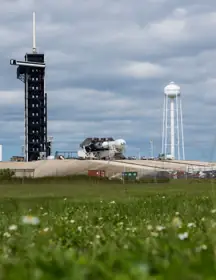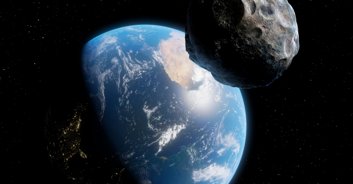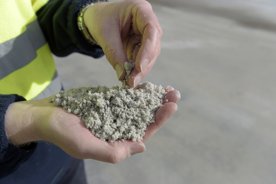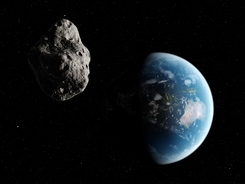NASA has successfully launched a spacecraft that is now on its way to an asteroid that is dense in precious metals.
Over the summer, the space organization announced that it would be rolling out a major mission that intends to utilize an asteroid - named 16 Psyche - for its abundance of iron and nickel worth approximately $10,000,000,000,000,000,000.
As per a report by the Planetary Science Journal - which looked deeper into the qualities of the asteroid - 16 Psyche is one of the biggest objects in the solar system's main asteroid belt, orbiting between Mars and Jupiter, about 230 million miles from Earth.
It measures about 140 miles in diameter - with CBS News comparing the vastness to the size of Massachusetts.

In a press release from July, NASA announced that the spacecraft was ready to travel billions of miles to complete the mission.
"With less than 100 days to go before its launch, teams of engineers and technicians are working almost around the clock to ensure the orbiter is ready to journey 2.5 billion miles to a metal-rich asteroid that may tell us more about planetary cores and how planets form," the press release read.
At the time, Henry Stone, Psyche’s project manager at NASA’s Jet Propulsion Laboratory in Southern California also expressed his excitement at the potential of this project.
"The team and I are now counting down the days to launch," Stone said. "Our focus has shifted to safely completing the final mechanical closeout of the spacecraft and preparing the team for operations. The team is conducting numerous training activities to ensure that we are prepared and ready.
"It’s a very busy time, but everyone is very excited and looking forward to the launch," he added.

Previously, the mission had to be set back as there were a few issues with the software involved. However, after careful revision and further confirmation from Luis Dominguez, the systems and electrical lead for assembly, test, and launch operations who said they were "confident" that they would be able to launch on October 13, the company was ready to enter the next phase of the mission.
Fast forward just under three months and the spacecraft - a SpaceX Falcon Heavy from Space Launch Complex 39A - has finally launched successfully and is on the way to 16 Psyche.
The orbiter is set to arrive in 2026.

Dr. Tracy Becker, the lead author of the Planetary Science Journal's report, revealed further details of the asteroid.
"We've seen meteorites that are mostly metal, but Psyche could be unique in that it might be an asteroid that is totally made of iron and nickel," she said in a statement. "Earth has a metal core, a mantle and crust. It's possible that as a Psyche protoplanet was forming, it was struck by another object in our solar system and lost its mantle and crust."
After further investigation, scientists found that the surface could be mostly iron, but warned that even a small amount of iron would dominate UV observations, which are crucial to identifying further details about the properties of the rock.
"We were able to identify for the first time on any asteroid what we think are iron oxide ultraviolet absorption bands," Becker said. "This is an indication that oxidation is happening on the asteroid, which could be a result of the solar wind hitting the surface."

Researchers also added the asteroid became more and more reflective at deeper UV wavelengths, which could give some indication of its age.
"This is something that we need to study further," Becker said. "This could be indicative of it being exposed in space for so long. This type of UV brightening is often attributed to space weathering."
Elsewhere Becker also spoke of why this mission is exciting for scientists: "What makes Psyche and the other asteroids so interesting is that they're considered to be the building blocks of the solar system. To understand what really makes up a planet and to potentially see the inside of a planet is fascinating. Once we get to Psyche, we're really going to understand if that's the case, even if it doesn't turn out as we expect.
"Any time there's a surprise, it's always exciting," she added.




